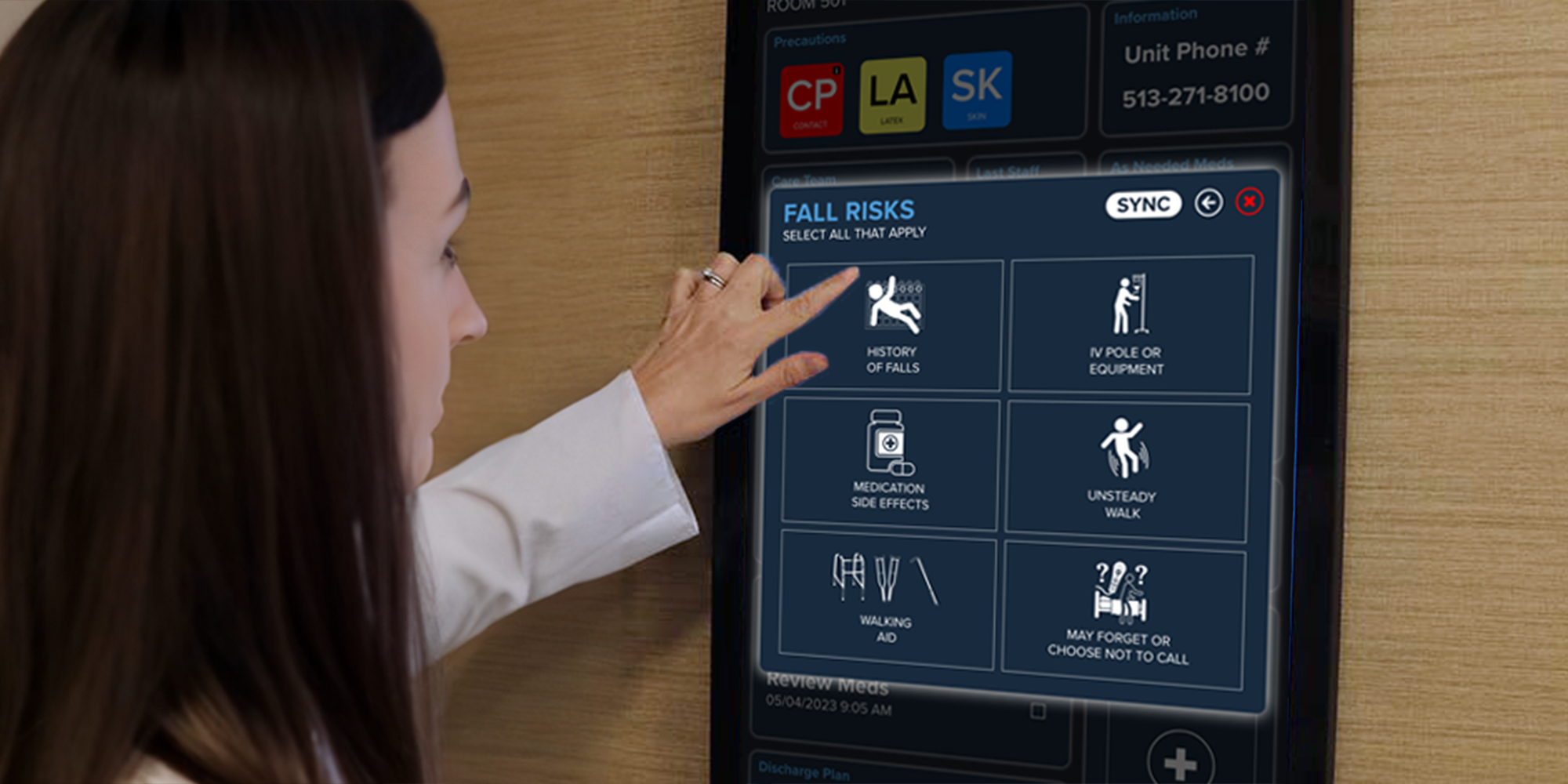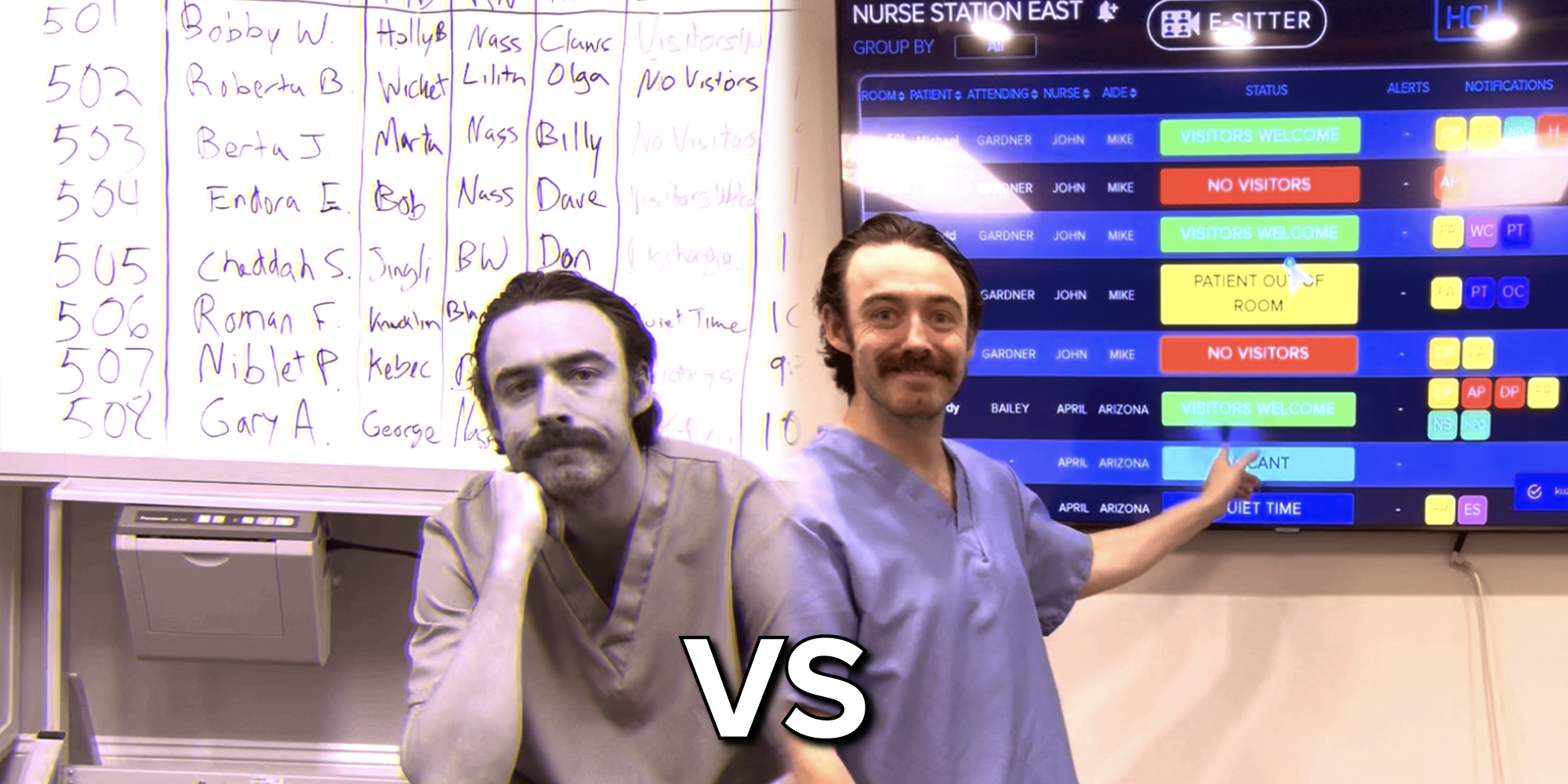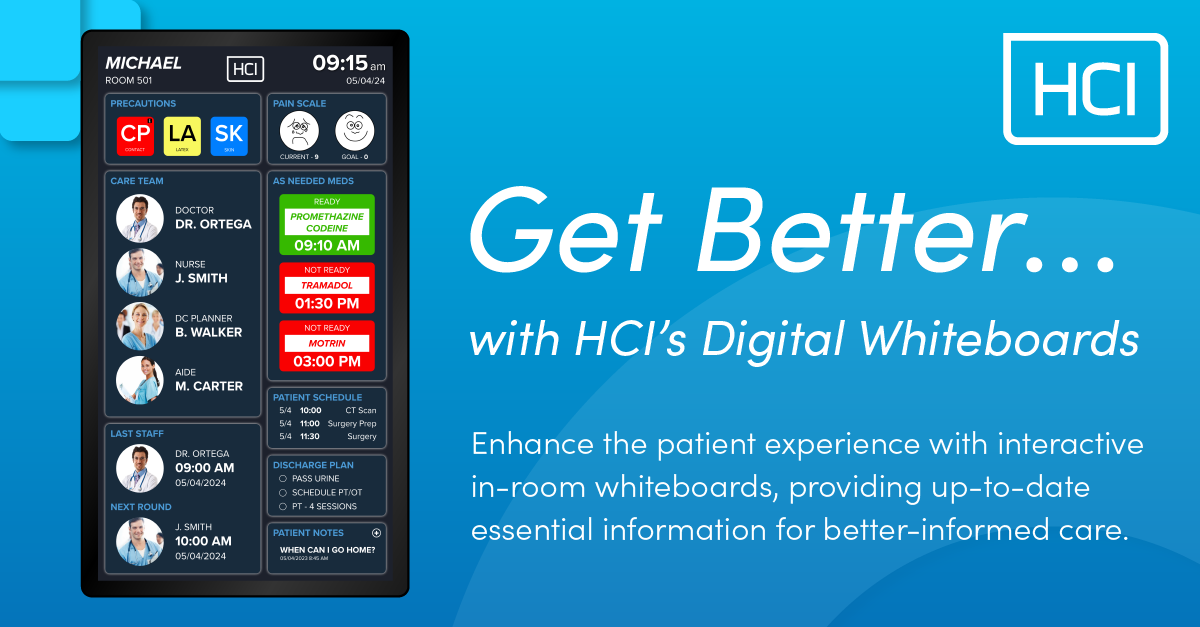Maximizing ROI with HCI’s Digital Whiteboard Suite: A Game-Changer for Hospitals
Hospitals are under constant pressure to improve patient outcomes while managing costs effectively. Investing in technology that delivers a measurable return on investment (ROI) is no longer just a goal—it’s a necessity.

HCI’s Digital Whiteboard Suite is designed to not only enhance patient care but also help hospitals achieve tangible savings and operational efficiencies. Let’s explore how HCI’s solutions can directly impact the bottom line by addressing key challenges such as reducing patient falls, minimizing infections, lowering staff turnover, and increasing bed turnover.
1. Reduction in Patient Falls
Falls are a major concern in hospitals, not just for patient safety but for the financial strain they can cause. According to the Agency for Healthcare Research and Quality (AHRQ), the average cost of a fall-related injury in a hospital is around $35,000. With fall-related incidents adding up to millions annually, preventing falls is a critical focus for hospitals.
HCI’s Digital Whiteboards integrate with smart bed technology, such as Hillrom and Stryker beds, to monitor and alert staff to bed-exit risks. By displaying real-time patient information, including fall risk levels and bed safety settings, the whiteboard acts as a crucial communication tool between nursing staff, patient care teams, and the hospital’s fall prevention protocols. The result? Faster interventions and fewer incidents of patient falls—leading to substantial cost savings from reduced fall-related injuries.
2. Minimizing CAUTIs and MRSA Infections
Hospital-acquired infections (HAIs), including Catheter-Associated Urinary Tract Infections (CAUTIs) and Methicillin-Resistant Staphylococcus Aureus (MRSA) infections, are not only detrimental to patient health but also carry significant financial penalties. The Centers for Disease Control and Prevention (CDC) estimates that CAUTIs cost hospitals approximately $13,000 per infection, while MRSA infections can range from $20,000 to $30,000 per case.
HCI’s Digital Whiteboard Suite allows hospitals to display key patient data that can prevent these infections, including catheter duration, hygiene reminders, and isolation precautions. By automating reminders and tracking infection prevention protocols, hospitals can reduce the risk of HAIs, thereby avoiding penalties and cutting down on the costs associated with extended patient stays due to infections.
3. Reducing Staff Turnover
High staff turnover rates are a burden on hospitals both financially and operationally. Replacing a nurse can cost a hospital between $40,000 and $60,000 when considering recruiting, training, and temporary staffing. Furthermore, turnover contributes to staff burnout, which can compromise patient care.
HCI’s Digital Whiteboard Suite alleviates these pressures by streamlining workflows, reducing the cognitive load on nurses, and improving overall job satisfaction. Features like real-time patient updates, automated reminders, and integration with hospital systems such as nurse call and EMR help nurses focus on patient care rather than administrative tasks. This reduction in unnecessary work helps hospitals retain experienced staff, saving costs associated with turnover and improving the overall quality of care.
4. Increasing Bed Turnover with EVS Functionality
Timely bed turnover is essential for maximizing revenue, especially in high-demand hospitals. Delays in discharging patients and preparing rooms for new admissions can lead to bottlenecks and lost revenue opportunities. According to a study by the Advisory Board, improving bed turnover by even 30 minutes can save hospitals hundreds of thousands of dollars annually.
HCI’s Digital Whiteboards include Environmental Services (EVS) functionality that accelerates room cleaning and turnover. Real-time notifications can be sent to EVS teams the moment a discharge order is placed, and the status of room readiness is displayed on both the whiteboard and centralized unit boards. This streamlined communication reduces downtime between patients, allowing for quicker admissions and maximizing hospital capacity, ultimately boosting revenue.
5. Enhancing Patient Satisfaction and HCAHPS Scores
While often overlooked, patient satisfaction has a direct financial impact on hospitals. Higher Hospital Consumer Assessment of Healthcare Providers and Systems (HCAHPS) scores can result in higher reimbursement rates and better patient retention. Hospitals that score well on HCAHPS surveys can receive additional revenue through value-based purchasing programs.
HCI’s Digital Whiteboard Suite improves patient satisfaction by providing clear, real-time communication of patient care plans, schedules, and hospital services. Patients feel more informed and engaged in their care, leading to better experiences and improved HCAHPS scores. When patients understand their care, they are more likely to comply with discharge instructions, reducing readmission rates and increasing the likelihood of positive survey responses.
Conclusion: The Long-Term ROI of HCI’s Digital Whiteboard Suite
HCI’s Digital Whiteboard Suite offers hospitals a clear path to improving patient care while significantly cutting costs. By reducing falls, minimizing HAIs like CAUTIs and MRSA, lowering staff turnover, and optimizing bed turnover through EVS functionality, hospitals can see a dramatic improvement in operational efficiency and financial performance. Moreover, enhanced patient satisfaction and HCAHPS scores lead to higher reimbursements and better patient retention.
Investing in HCI’s Digital Whiteboard Suite is not just about upgrading technology—it’s about creating a safer, more efficient, and more profitable hospital environment.
Share this
You May Also Like

Introducing HCI’s AI-Driven Fall Risk Mitigation Program



